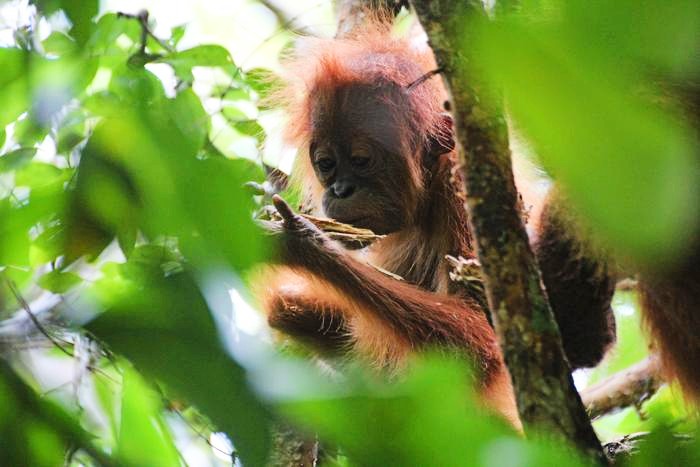Orangutans living in zoos are far more curious and investigative than their wild counterparts, engaging in more frequent, diverse, and complex exploration behaviors throughout their lives, according to groundbreaking research published in Scientific Reports.
The study, which analyzed over 12,000 instances of exploratory object manipulation across 51 Sumatran orangutans ranging from six months to 76 years old, reveals that the zoo environment dramatically enhances how these intelligent apes interact with their surroundings.
“Our study shows that orangutans in zoos not only explore more, but they also explore differently,” said Isabelle Laumer, first author of the study. “What’s especially fascinating is that even when exploring the same kinds of objects, zoo-housed orangutans showed a richer repertoire of actions and were more likely to use tools or manipulate multiple objects at the same time.”
Researchers collected data from wild orangutans at the Suaq Balimbing research site in Indonesia and from zoo orangutans at facilities in Germany and Switzerland. The striking differences they observed offer new insights into how environment shapes cognitive development in these highly intelligent primates.
While wild orangutans primarily explored naturally occurring objects like plants, bark, and sticks, zoo orangutans engaged with a wider variety of enrichment items such as toys, puzzles, and stackable objects. More significantly, even when exploring the same natural objects available in both settings, zoo orangutans demonstrated more complex manipulation techniques.
The developmental timing of exploration proved particularly revealing. Wild orangutan exploration peaks during early childhood but drops dramatically around weaning age (about 8 years), when young apes must focus on foraging. In contrast, zoo orangutans maintain high levels of exploration well into adulthood, suggesting they have more time and energy to devote to learning through play and investigation.
These findings have important implications for animal welfare and understanding cognitive potential. Zoo environments, with their regular feeding schedules and absence of predators, appear to create ideal conditions for orangutans to develop and express cognitive abilities that may remain dormant in the wild.
“These findings underscore how profoundly the environment influences animal behavior and cognitive development,” explained Caroline Schuppli, senior author of the study. “And it also offers unique opportunities—by comparing wild and zoo-housed animals, we can better understand the full extent of a species’ cognitive potential.”
The research raises important questions about how we interpret cognitive studies of zoo animals. While captive conditions may not represent natural behavior, they may reveal capabilities that wild orangutans possess but rarely display due to survival pressures.
Significantly, the study found no difference between wild and zoo orangutans in the age at which they first demonstrated specific exploratory actions, suggesting that the basic developmental sequence is innate rather than environmentally determined.
What differed most dramatically was the frequency and complexity of exploration. Zoo orangutans were far more likely to use multiple objects together and engage in tool-related behaviors, skills that correlate with enhanced problem-solving abilities.
For zoo visitors, the findings suggest that the seemingly playful object manipulation frequently observed in orangutan exhibits represents meaningful cognitive development rather than mere entertainment. These exploratory behaviors help orangutans build a diverse repertoire of skills that enhance their ability to adapt to novel situations—a crucial ability both in zoos and the wild.
Discover more from Wild Science
Subscribe to get the latest posts sent to your email.

